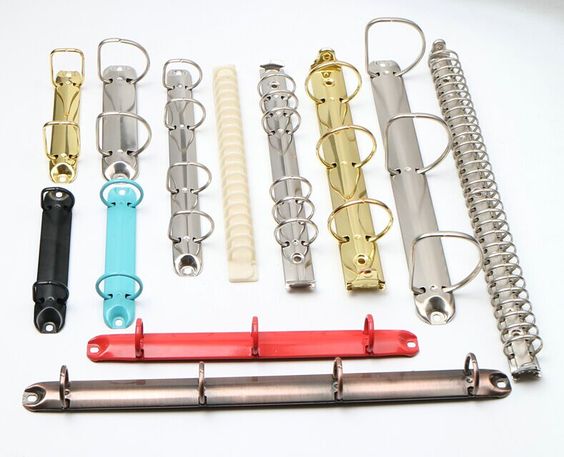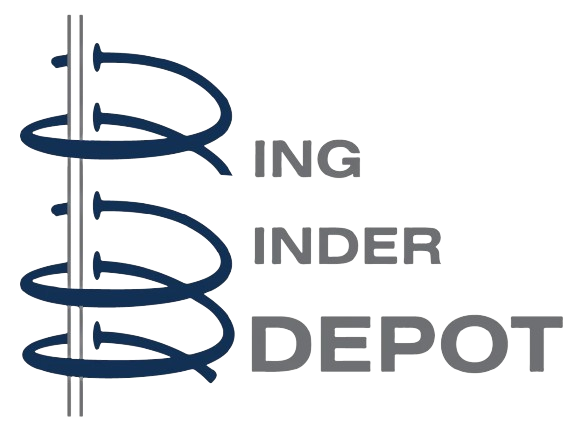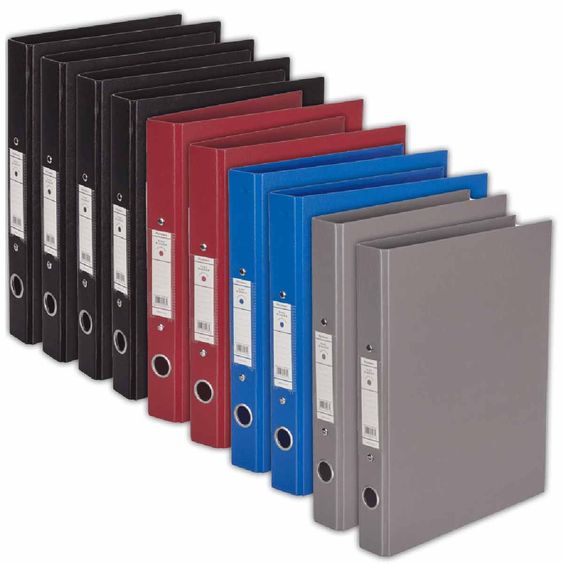
A Closer Look at D-Ring vs. Round Ring Binders
Choosing between D-ring and round ring binders is an essential decision when it comes to organizing your documents. In this blog post, we will provide an in-depth comparison of these two popular binder types to help you make an informed choice based on your specific needs.
Round Ring Binders
Round ring binders are the traditional and most common type of binder. Here's what you need to know about them:
1. Mechanism: Round rings have a circular shape and open and close with a simple mechanism. They are easy to use and budget-friendly.
2. Page Capacity: Round ring binders come in various sizes, accommodating different page capacities. Smaller sizes are suitable for light use, while larger ones can hold substantial documents.
3. Page Turning: While they are easy to turn, round rings may cause pages to curl slightly, especially when the binder is full.
4. Cost-Effective: Round ring binders are typically more affordable than their D-ring counterparts, making them an excellent choice for cost-conscious individuals and organizations.
D-Ring Binders
D-ring binders offer a slightly different approach to organization:
1. Mechanism: D-ring binders have a D-shaped ring mechanism that provides more stability and page capacity compared to round rings. They open and close with a straighter motion.
2. Page Capacity: D-ring binders generally have a higher page capacity, allowing you to store more pages without overstretching the rings.
3. Page Turning: Due to their shape, D-ring binders offer smoother page turning, and they are less likely to cause pages to curl, making them ideal for frequent reference.
4. Durability: D-ring binders are known for their durability, making them a great choice for long-term storage and frequent use.
Choosing the Right Binder
When deciding between D-ring and round ring binders, consider the following factors:
-
Page Capacity: If you need to store a substantial number of pages, D-ring binders are a better choice due to their higher capacity.
-
Page Turning: If you require easy and frequent page turning without curling, D-ring binders offer a smoother experience.
-
Budget: Round ring binders are more budget-friendly, making them suitable for those with cost constraints.
-
Purpose: Consider the intended use. Round rings are versatile for general purposes, while D-ring binders excel in situations where durability and higher capacity are needed.
-
Storage Duration: If you plan to archive documents for an extended period, D-ring binders are more suitable due to their durability.
In conclusion, both D-ring and round ring binders have their merits, and the choice ultimately depends on your specific requirements. Whether you prioritize page capacity, smooth page turning, durability, or budget, there's a binder type that aligns with your needs. Explore our range of D-ring and round ring binders to find the perfect fit for your organization and document management needs.


